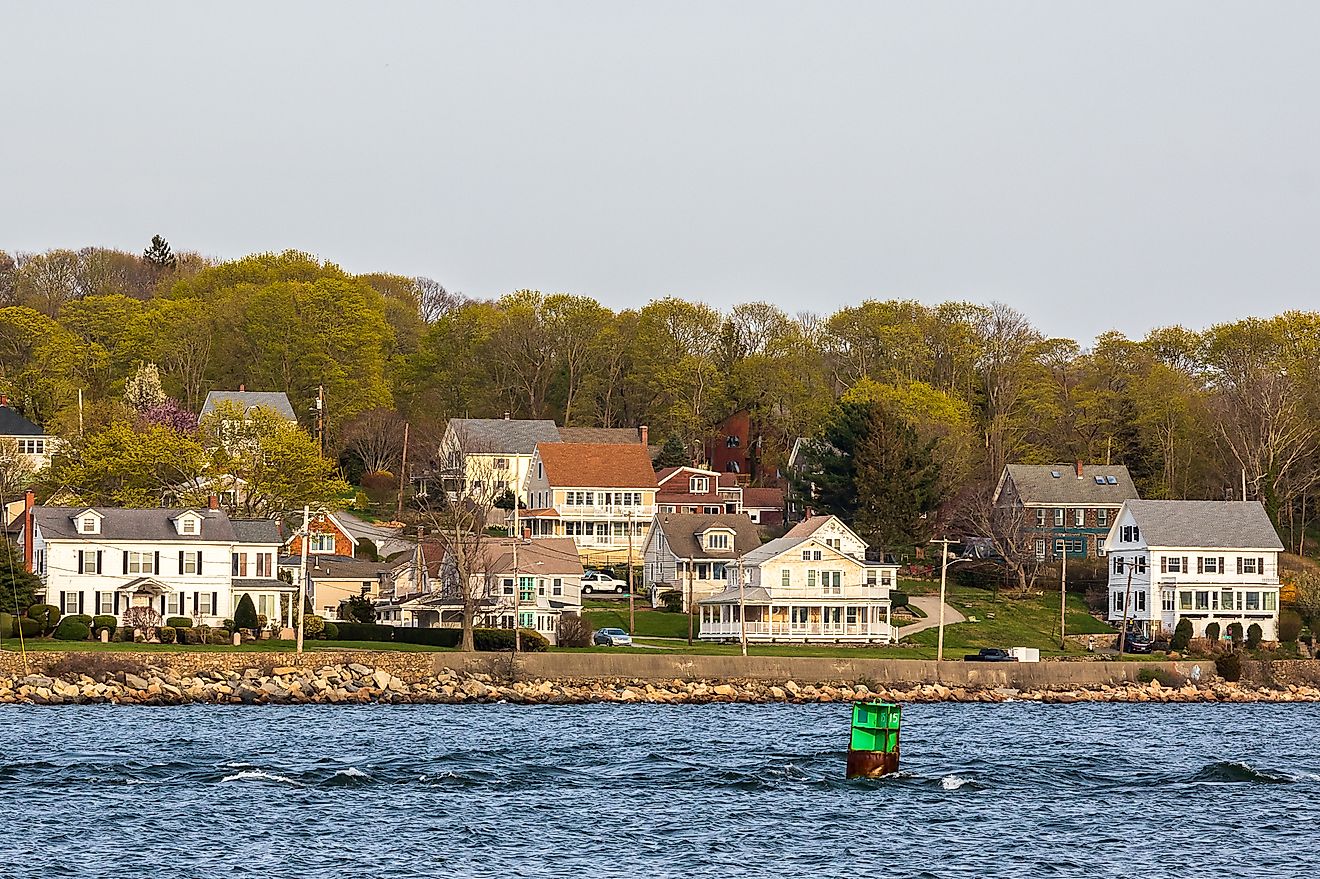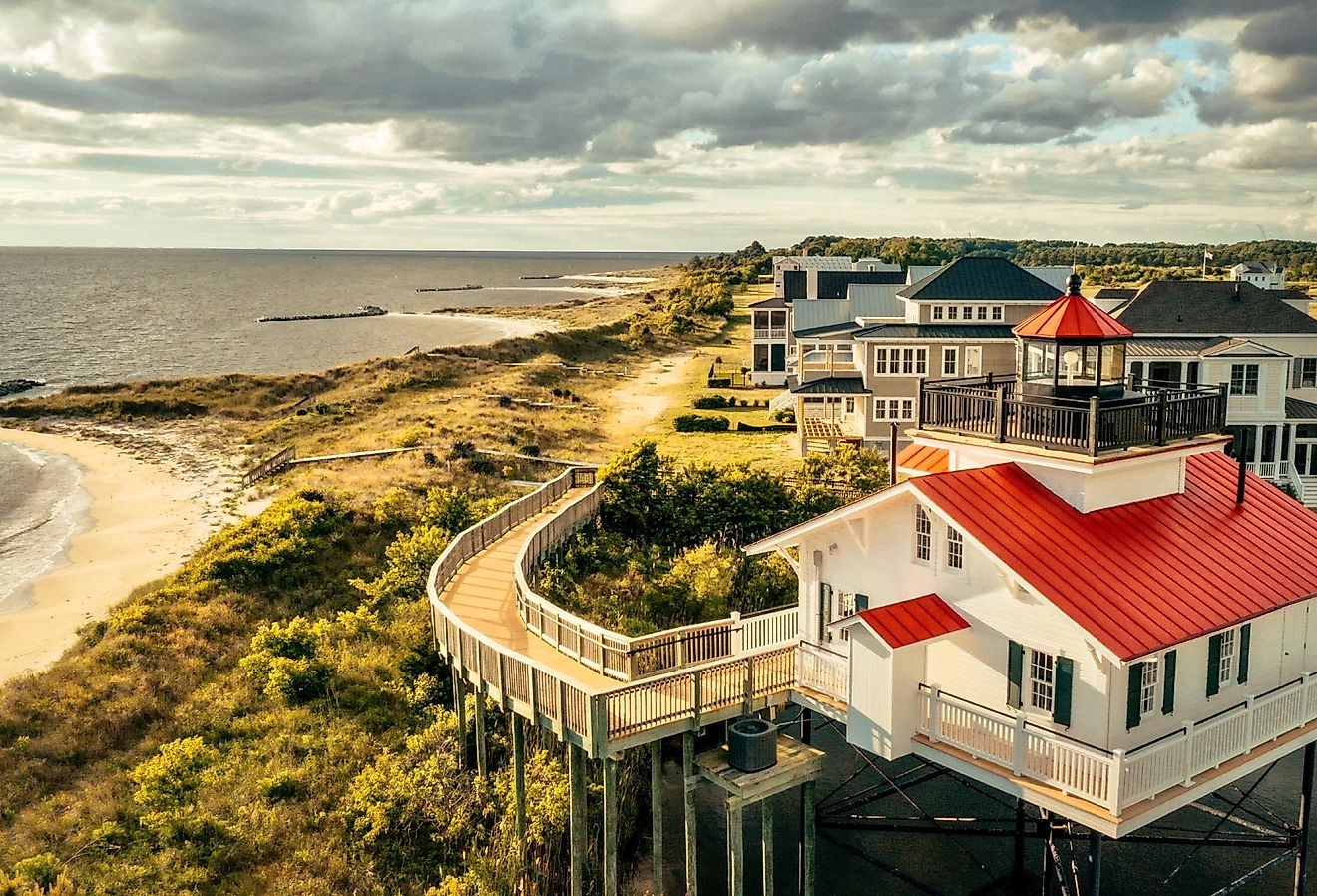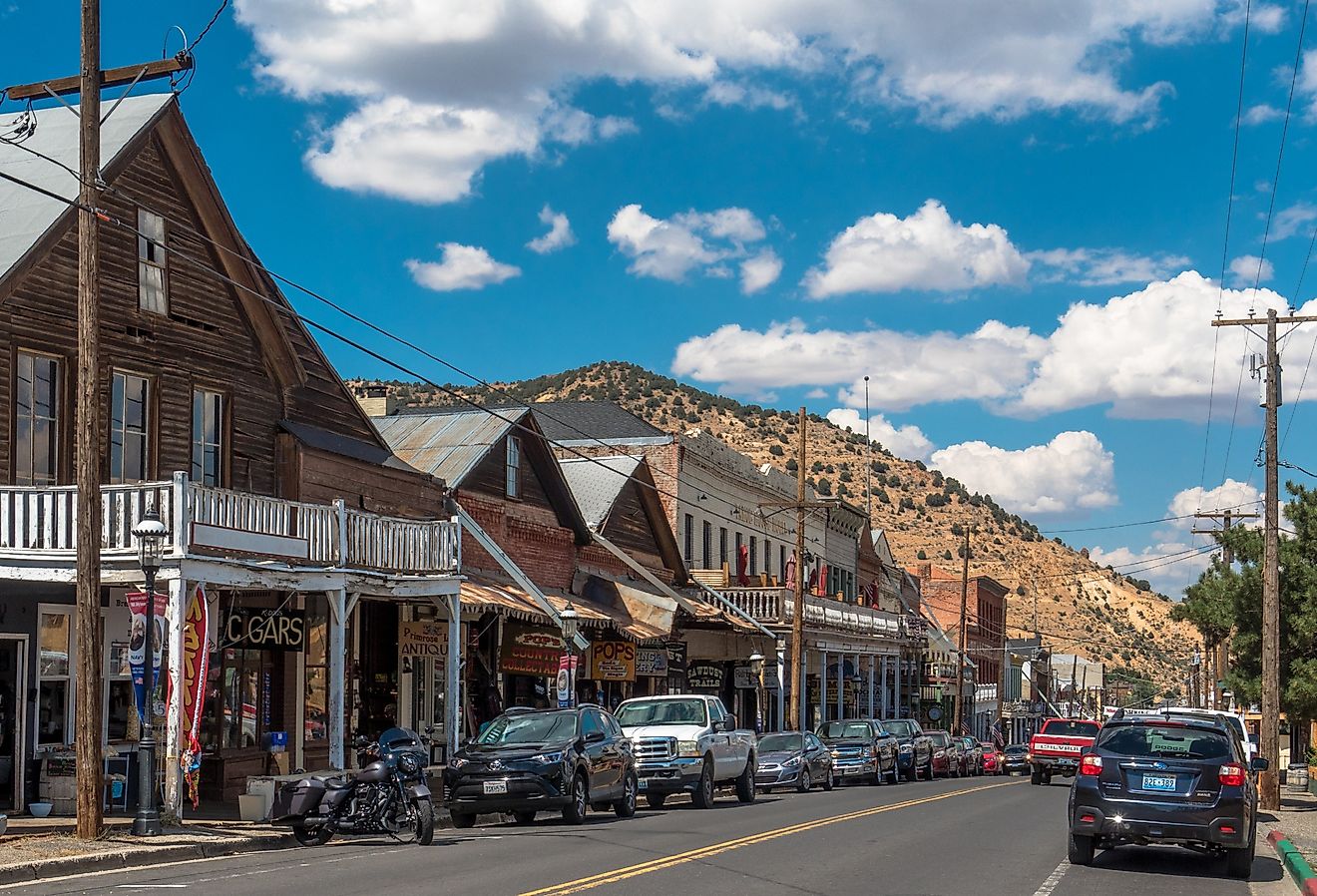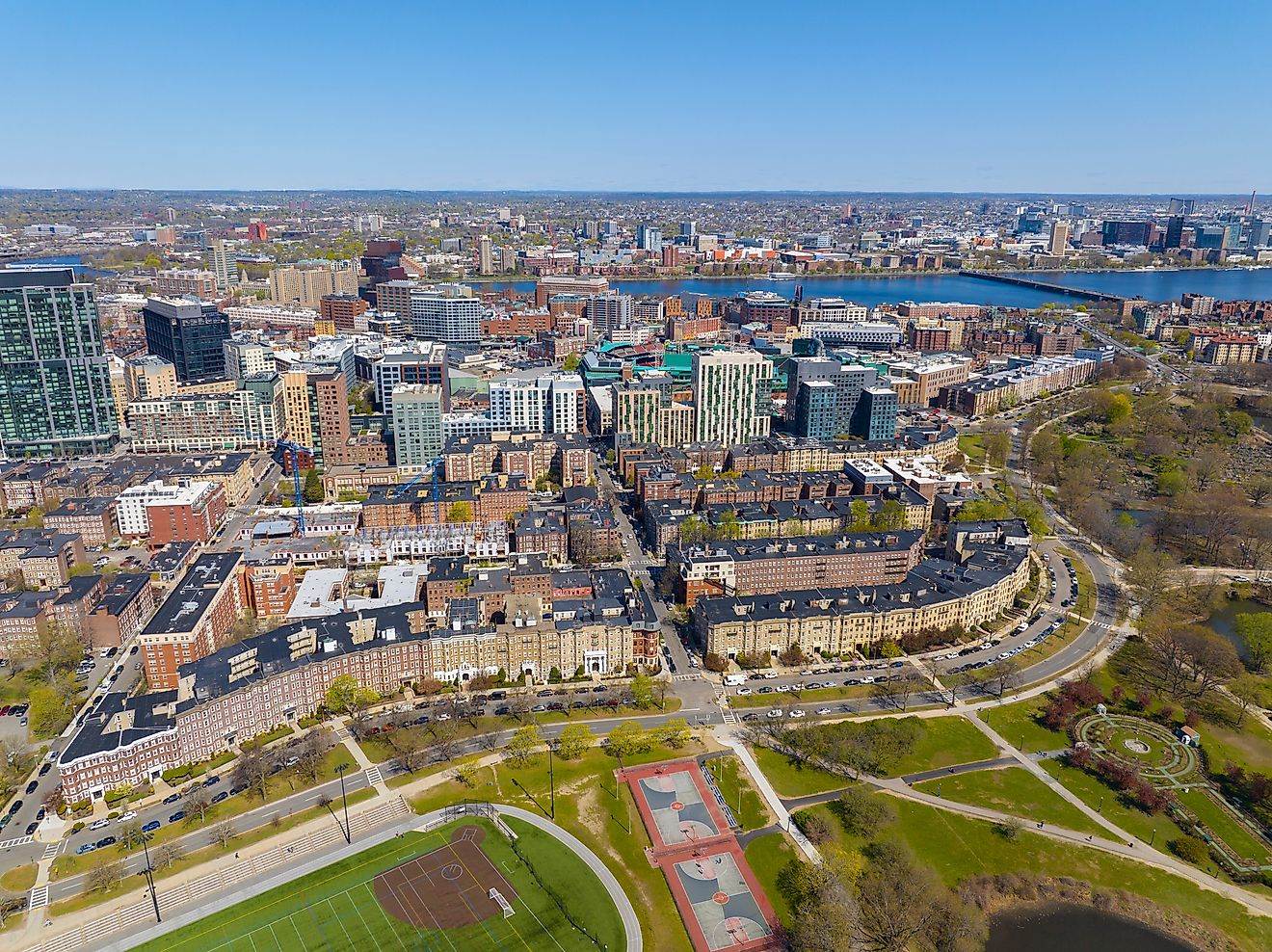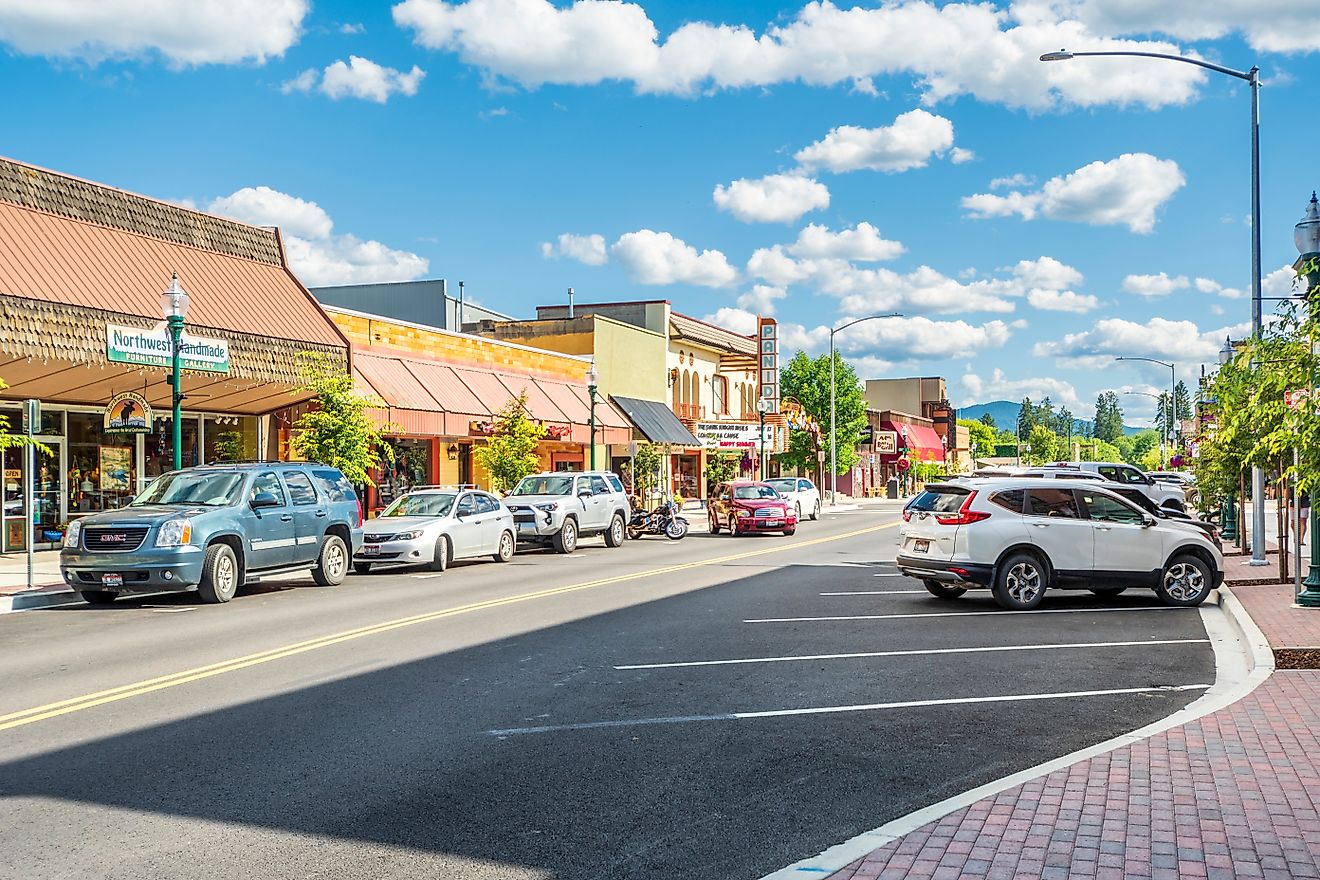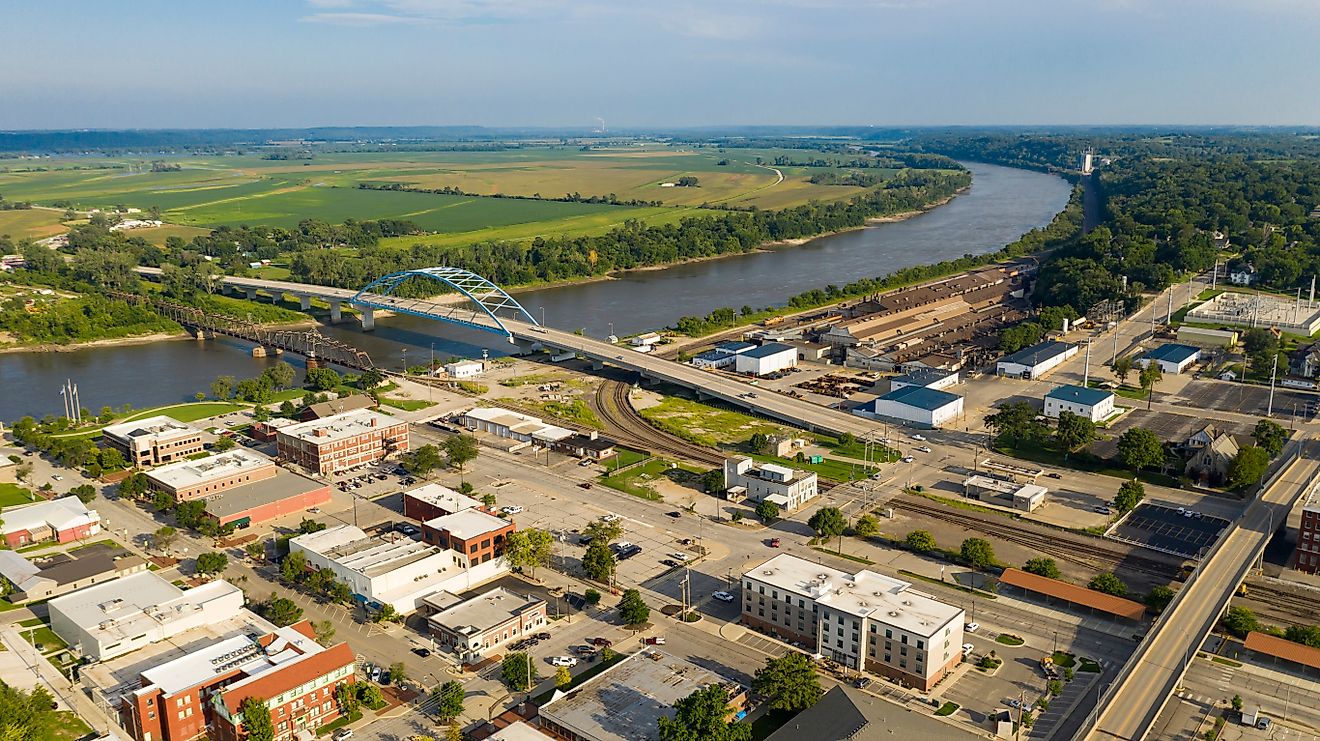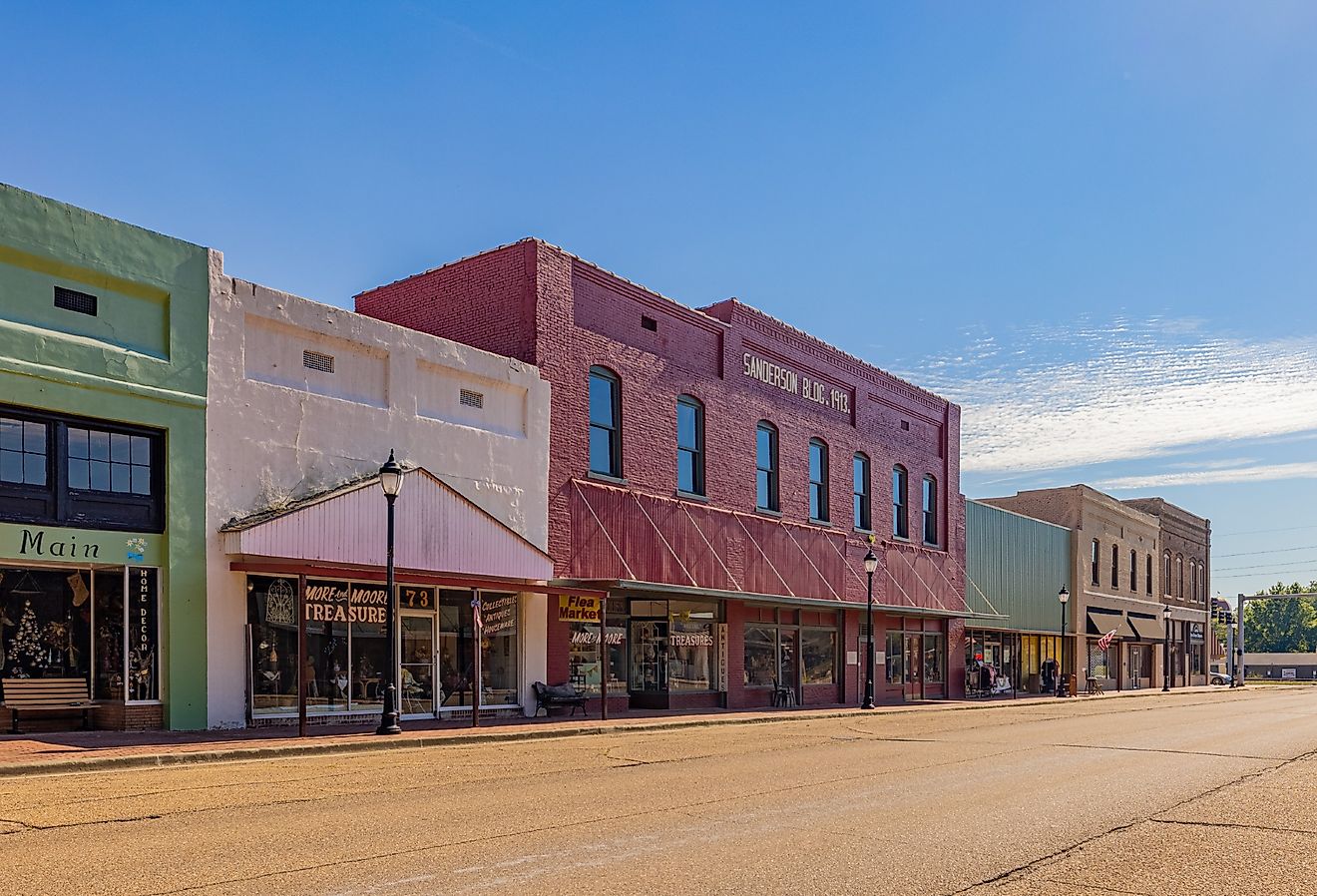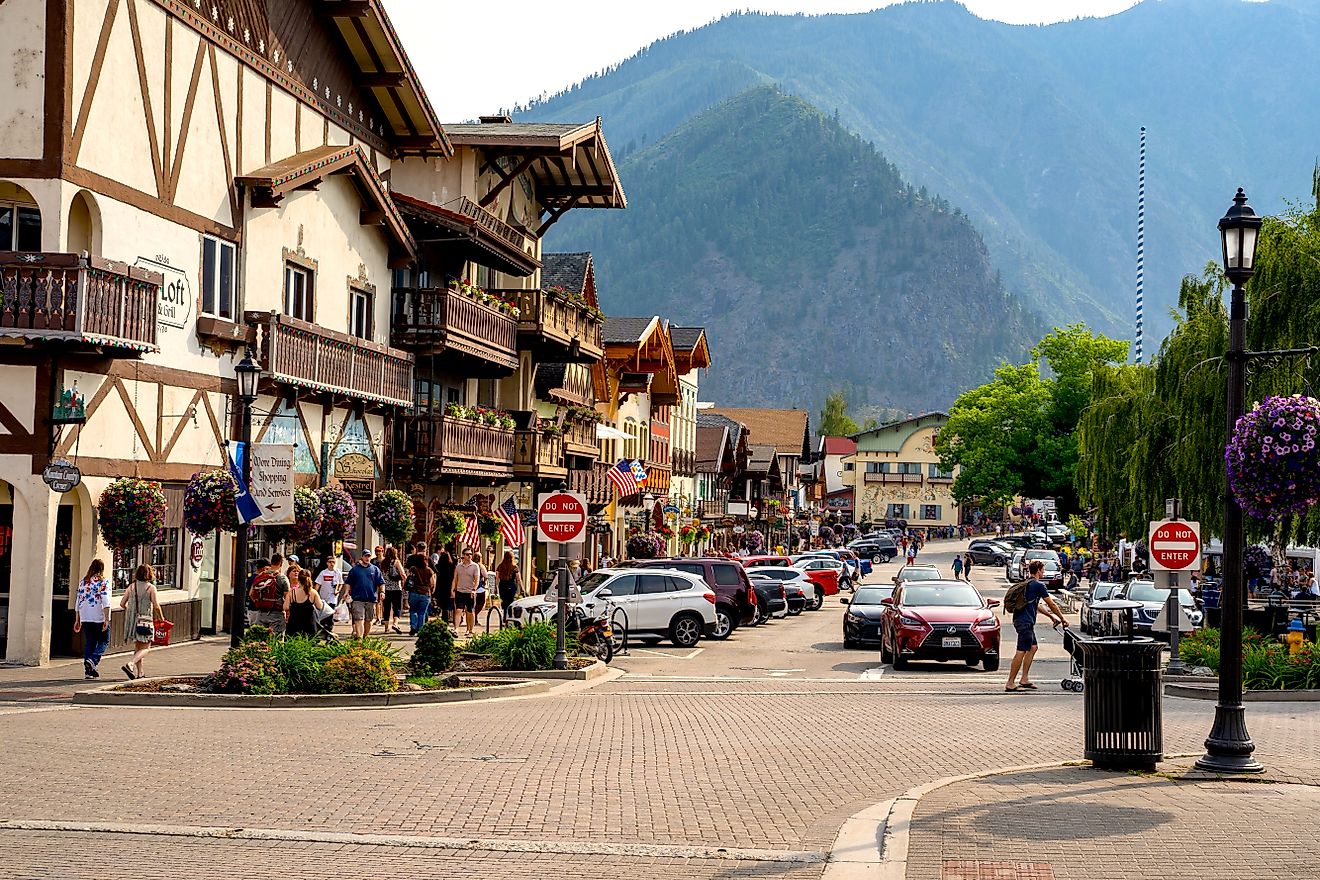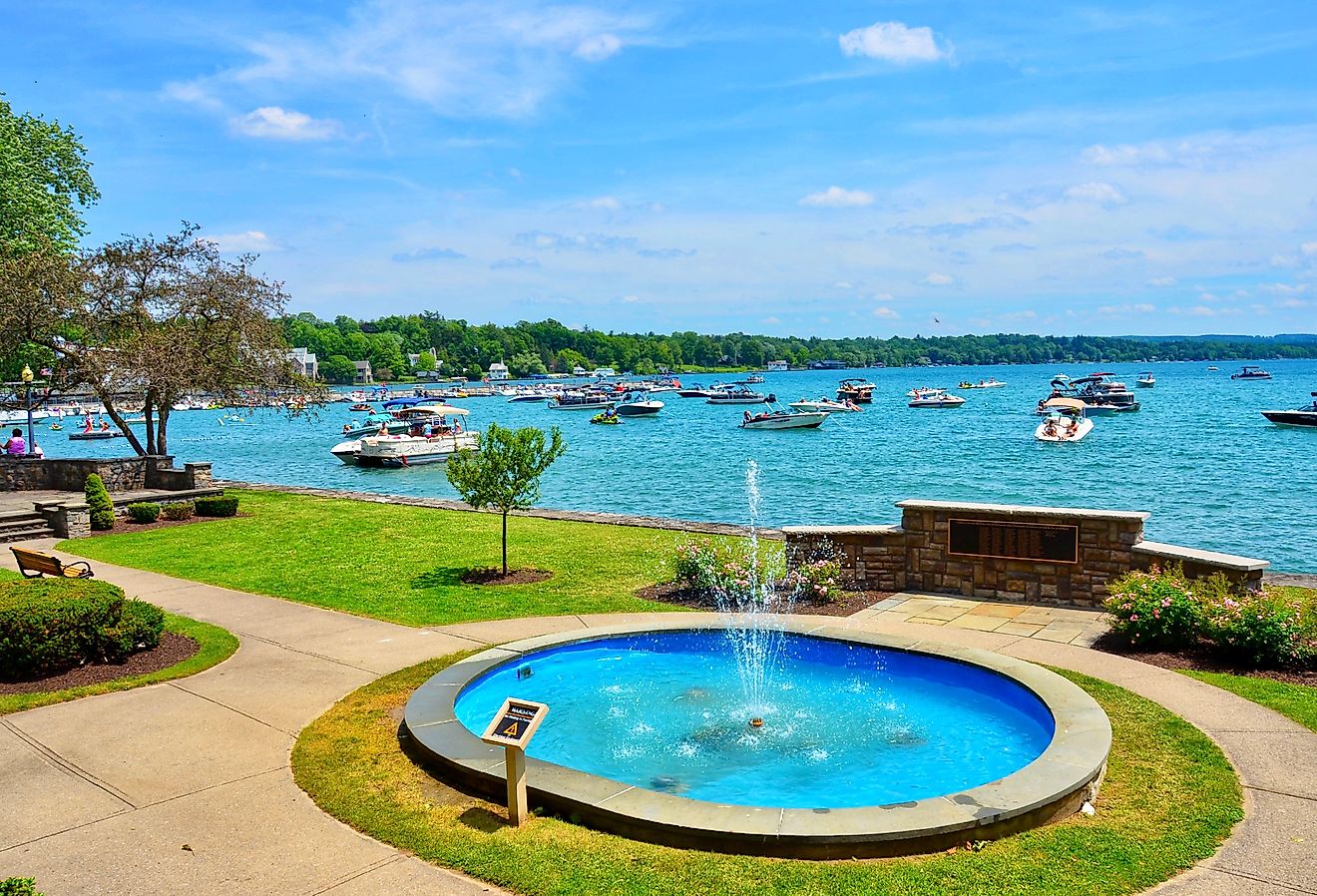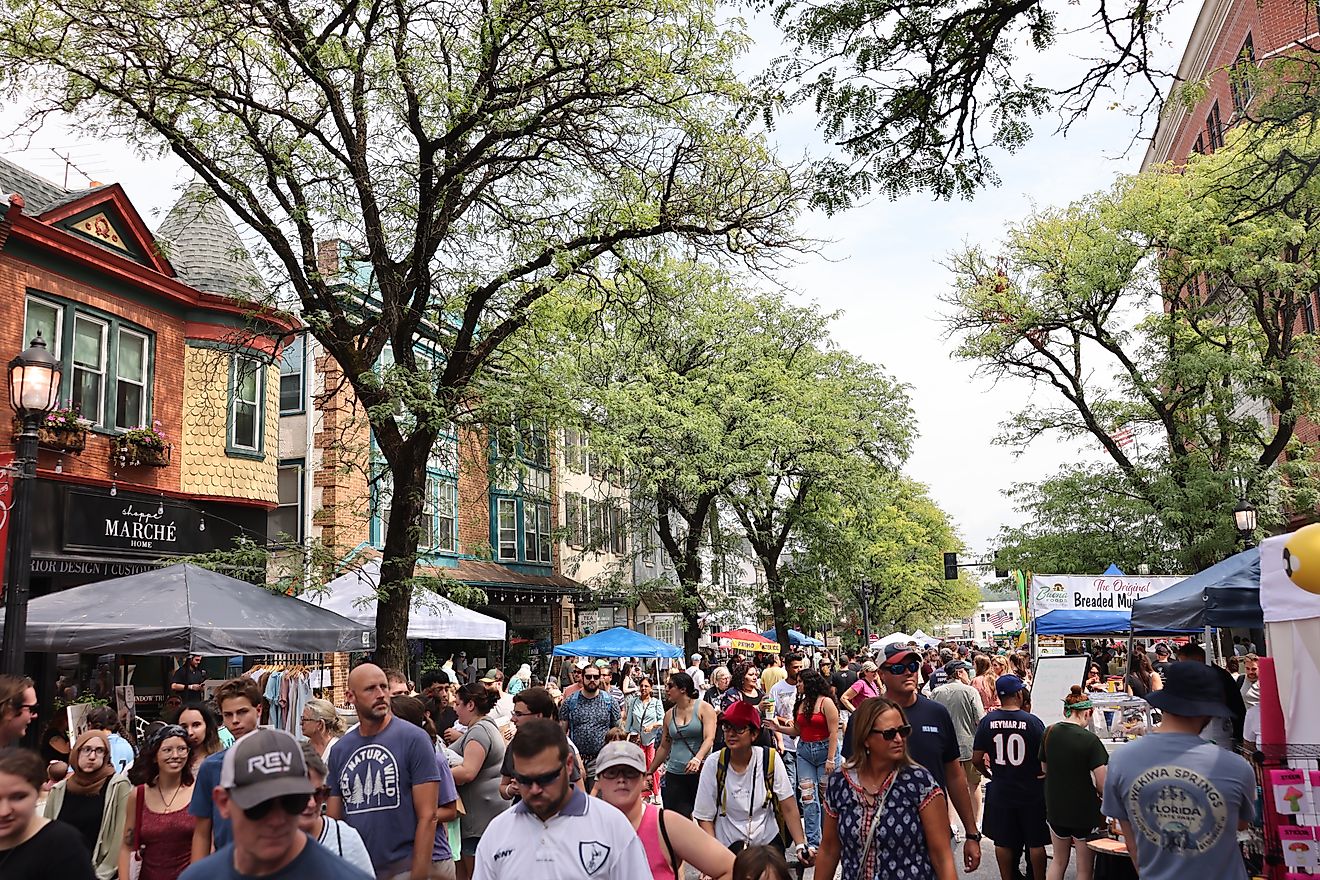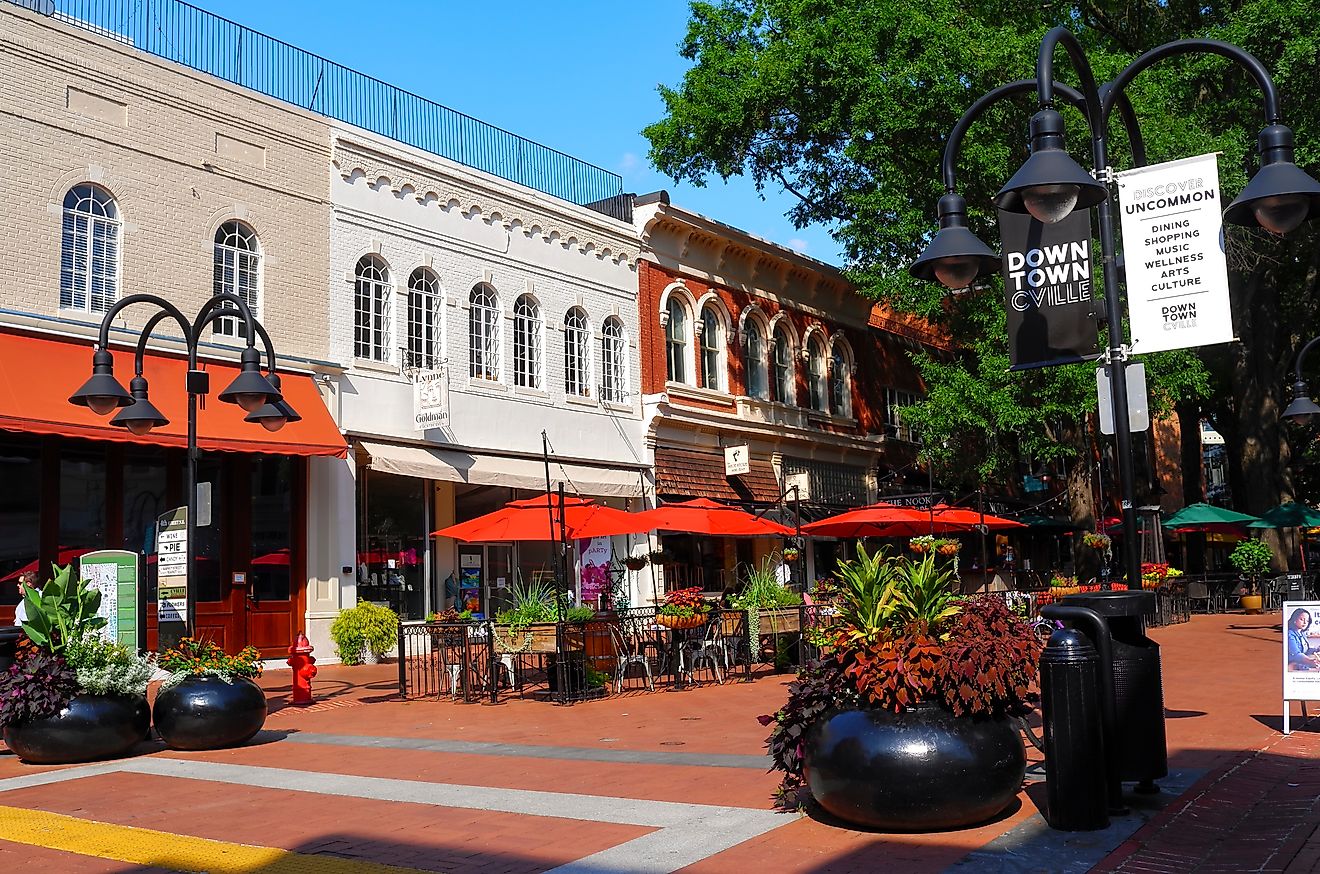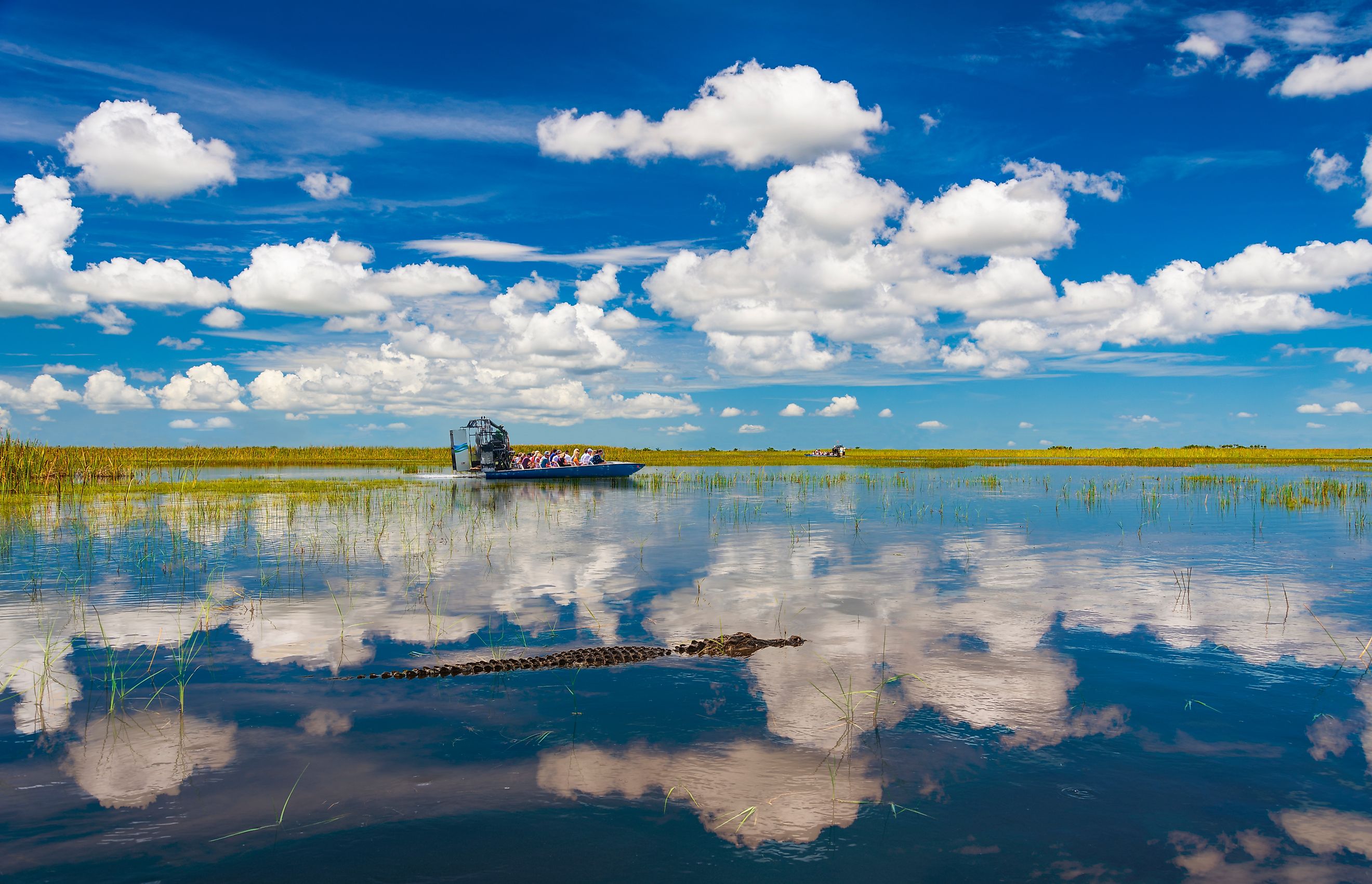
6 Most Alligator Filled Places in Florida
American alligators can be found in the coastal wetlands of the southeastern US, as far as North Carolina in the north and as far west as eastern Texas. Their range extends down to southern Florida and includes the Everglades. These reptiles are usually found in deep, slow-moving freshwater rivers (called sloughs) but also inhabit swamps, marshes, lakes, and wet prairie, where they dig out ponds for nesting.
Florida is an alligator hotspot and the many-toothed ancient reptiles are a major part of the tourism scene in the state. For a guaranteed alligator sighting, visitors can head to one of Florida’s oldest attractions, St. Augustine Alligator Farm Zoological Park, or to Gatorland—Alligator Capital of the World in Orlando, but to see alligators in their natural habitat, here are Florida's six most alligator-filled places.
Lake Okeechobee
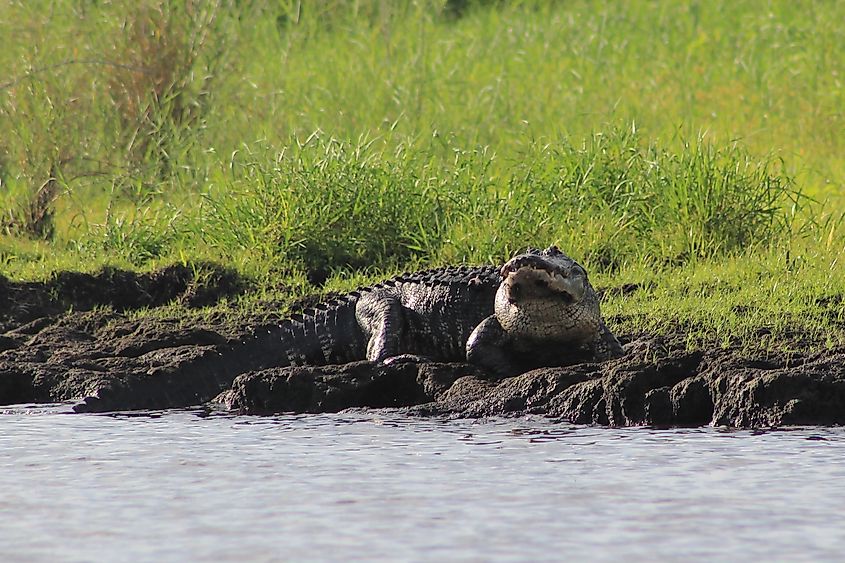
American Alligator in Lake Okeechobee.
Lake Okeechobee, or “Big O,” is Florida's largest freshwater lake, with 9,308 counted alligators who thrive in the marshy water (with an estimated population of about 30,000). The lake creates the ideal habitat for the gators, with ample food and enough nesting sites to support its growing population. The alligators in Lake Okeechobee aren’t just a tourism draw; they are critical to maintaining a balance in the local ecosystem of the lake. As apex predators (top of the food chain), the large reptiles in the lake help control the population of various bird species and contain the levels of various components of aquatic life.
Sometimes called “Florida’s Inland Sea,” Lake Okeechobee is an angler’s paradise, especially for visitors who want to catch the 750-square-mile lake’s legendary largemouth bass. Other catches include speckled perch, bluegills, Okeechobee catfish, and black crappies. For landlubbers, the 110-mile Lake Okeechobee Scenic Trail (LOST) circles the lake from atop the 35-foot Herbert Hoover Dike, built in the 1930s, for an elevated view of the lake and its gators.
Orange Lake
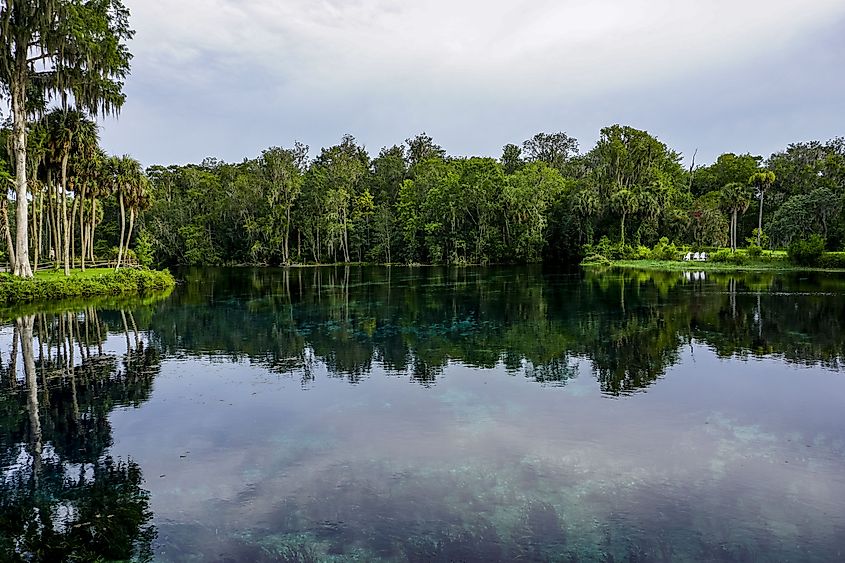
Ocala National Forest in Florida.
Orange Lake ranks second in the state for its booming alligator population. Covering about 19 rectangular miles, the lake is small compared to some of the other alligator habitats in the state. Despite its size, Orange Lake is home to a large population of alligators, making it one of Florida’s most alligator-filled lakes.
According to the Florida Fish and Wildlife Conservation Commission, Orange Lake is inhabited by nearly 3,000 alligators. About 115 of these are “bull gators,” a term that describes the most dominant alligators in a given location who typically exceed 9 feet in length. The record for the heaviest alligator in Florida is a 1,043-pound (13 feet 10-1/2 inches long) male from Orange Lake. The lake is part of the Ocala National Forest, a haven for travelers interested in nature, where visitors enjoy swimming, fishing, snorkeling, canoeing, and boating.
Lake George
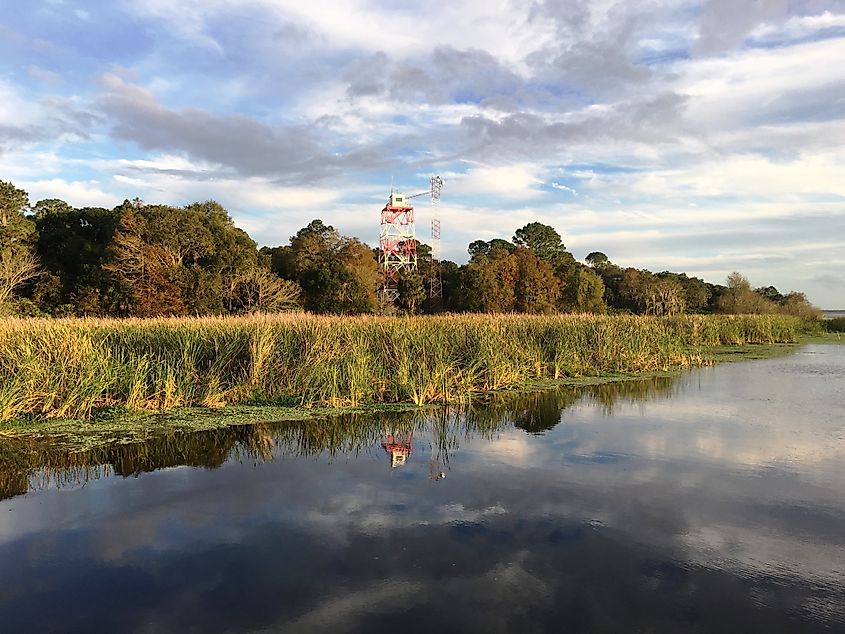
Range tower near Lake George on the St Johns River in Florida.
Lake George is Florida’s second largest lake, at approximately 6 miles across and 11 miles around, after Lake Okeechobee, and is one of the top five alligator-filled lakes in the state. A significant number of nesting bald eagle pairs also make their home at Lake George. The lake is fed from the St. Johns River, the longest river in Florida. A unique feature of Lake George is its salt content from springs along the St. Johns River, whose mix of fresh and saltwater provides a sustainable habitat for marine life like Atlantic stingrays, mullet, striped bass, and blue crabs.
The best way to spend time on Lake George is on a boat, available at outfitters along the St. Johns River. Most adventurers visit Lake George to fish as it is one of the state’s most popular bass fishing areas. On the water, anglers can spot tortoises, white-tailed deer, ospreys, Florida black bears, bobcats, and alligators. On land, Lake George’s shoreline features the 3-mile round-trip Lake George Trail, providing visitors with views of the lake framed by live oaks covered with Spanish moss. Hikers should be on the lookout for alligators basking in the sun along the bank where the trail is close to the water.
Lake Jesup
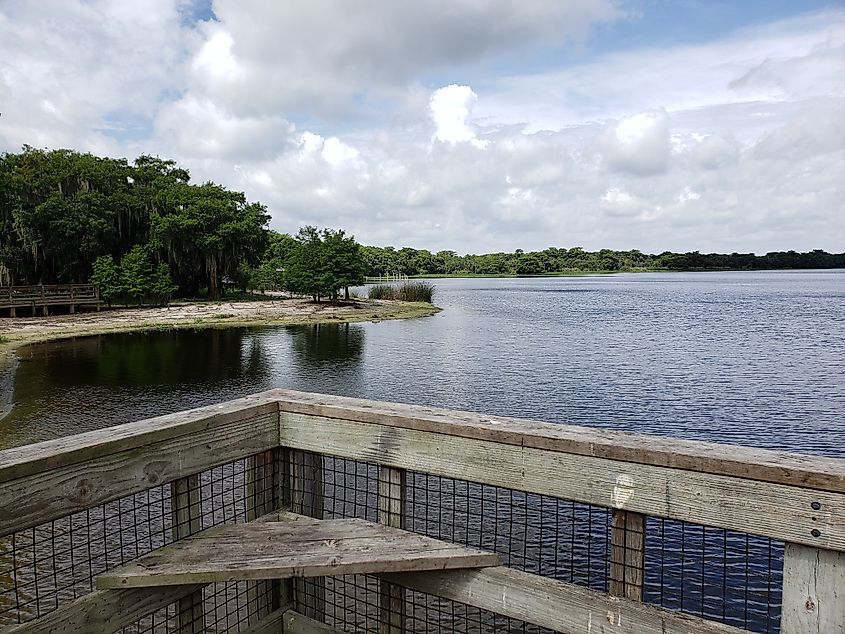
Lake Jesup overlook fishing pier in Central Florida.
Lake Jesup has a population of 2,414 gators (with an estimated alligator population of 13,000) and is considered home to more alligators per square mile of shoreline than almost any other lake in Florida, with more than 400 gators per square mile. The alligators at Lake Jesup are a big draw for visitors, and there are plenty of airboat tours on the lake to give visitors a close-up view of these magnificent reptiles.
Lake Jesup is a premier fishing destination in Central Florida, attracting anglers to its shallow waters year-round. The lake is home to popular species such as largemouth bass, black crappie, bluegill, and catfish. Fishing enthusiasts can cast their lines from the shore, use one of several fishing piers and platforms, or head out by boat to explore the lake’s numerous islands and coves. These sheltered areas create ideal habitats for fish, making Lake Jesup a favorite spot for local anglers and visitors looking for an authentic Florida fishing experience.
Lake Kissimmee
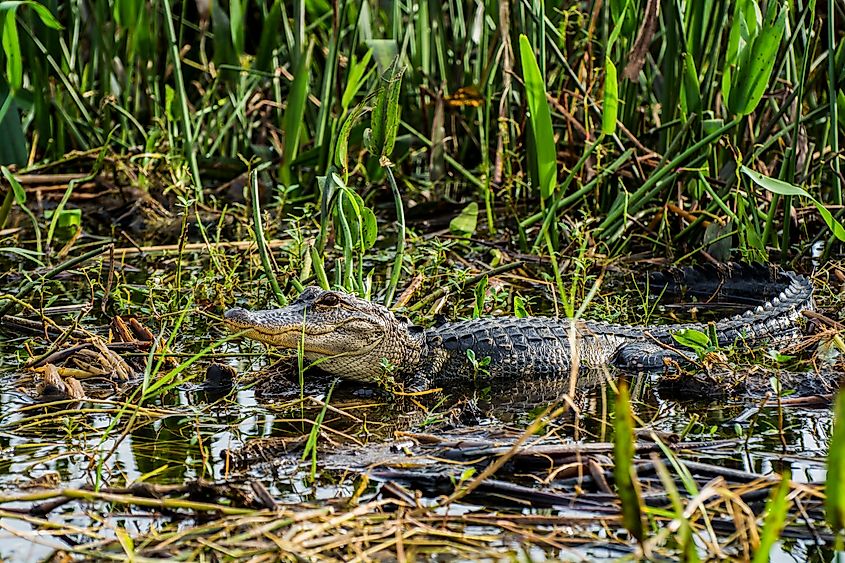
Despite its name, Lake Kissimmee is about 55 miles away from Kissimmee, Florida, in Osceola County. Lake Kissimmee is 35,000 acres in size, Florida’s third-largest lake, a gator hotspot, and a destination for outdoor adventurers, especially for visitors who like to fish, hike, or kayak. Lake Kissimmee State Park is located on the shores of lakes Kissimmee, Tiger, and Rosalie and comprises 5,930 acres of Central Florida.
With a diverse ecosystem that includes floodplain marshes and shady hammocks, the park is home to more than 30 species of flora and fauna, including the American alligator. There are 13 miles of hiking trails where hikers can spot white-tailed deer, bobcats, turkeys, Sherman’s fox squirrel, and grey foxes. The park is also a birding hotspot with over 200 species like the American bald eagle, sandhill crane, and the crested caracara. For the best chance of spotting a gator, rent a kayak from the park store (from November to April) and tour the pretty 10-mile Buster Island Paddling Trail.
Everglades National Park
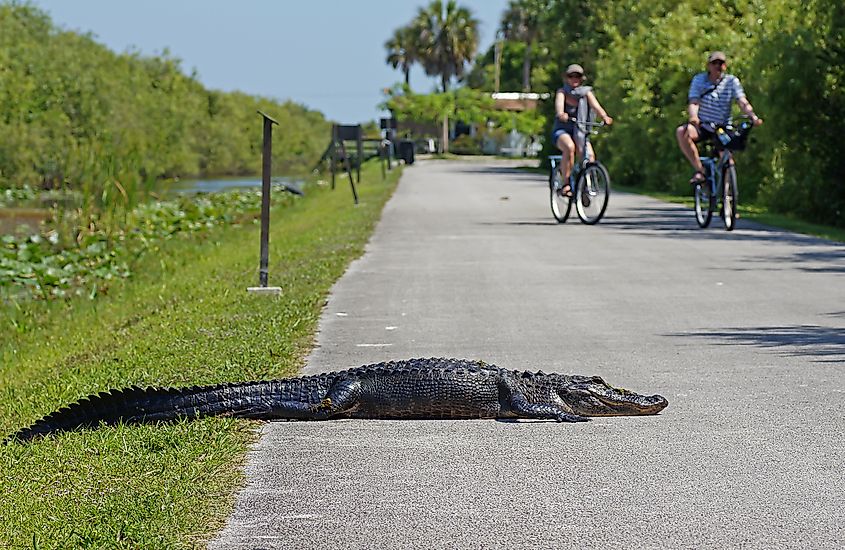
No other animal is more closely associated with the Everglades than the American alligator and the species is critical to the health and function of South Florida's ecology. There are plenty of options for gator spotting in the Everglades National Park, like booking an airboat ride with any one of the tour boat operators in Miami. Another way to go is to book a two-hour Everglades Tram Tour through the Shark Valley section of the park. Halfway through the tour, visitors can walk to the highest point in the Everglades National Park, the Shark Valley Observation Tower, where they can experience panoramic views of the Everglades, extending 20 miles in all directions.
Visitors who want to go old-school can take the less-than-one-mile roundtrip Anhinga Trail. The iconic trail, which was added to the US National Register of Historic Places in 1996, is a self-guided paved walkway and boardwalk over a freshwater sawgrass marsh where visitors can see alligators, turtles, anhingas, herons, egrets, and more. The best time of year to see alligators in the park, or anywhere in Florida, is from December through May.
Summary
With about 1.3 million alligators, the Sunshine State is the second most alligator-filled place in the United States (only Louisiana has more, at 2 million). Florida’s alligator population also includes Albert, the official mascot of the University of Florida in Gainesville, home to the Florida Gators. Albert’s skeleton now lives in the Florida Museum of Natural History after the practice of bringing a real alligator to football games fell out of popularity in the late 60s.
From the “Big O” to the mysterious and swampy Everglades, with an honorable mention going to Florida’s famed Alligator Alley, an 80-mile stretch of I-75 that runs from Naples to Fort Lauderdale through the northern section of Big Cypress National Preserve, visitors will be sure to encounter an alligator or two in any of these alligator-filled places in Florida.
